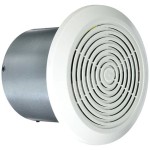How To Put A Shower In A Bathroom
Installing a shower in a bathroom is a significant undertaking, requiring careful planning, knowledge of plumbing and construction techniques, and attention to detail. While it may seem daunting, with proper preparation, tools, and understanding of the process, you can successfully transform your bathroom by adding a shower. However, if you lack experience or feel uncomfortable with any aspect of the project, it is highly advisable to consult with a qualified plumber or contractor for professional assistance. This article provides a step-by-step guide on how to install a shower, offering a comprehensive overview of the necessary steps and considerations.
1. Planning and Preparation
Before embarking on the shower installation, careful planning is essential. It involves assessing the existing bathroom layout, determining the ideal shower location, and considering the size and design. Here are some key aspects to consider:
a. Bathroom Layout: Evaluate the existing bathroom layout, considering the location of existing plumbing fixtures, walls, and ventilation. Determine the most suitable spot for the shower, ensuring accessibility and proper drainage.
b. Shower Size and Design: Choose the appropriate shower size based on the available space and desired functionality. Consider the type of shower enclosure, whether a walk-in shower, a bathtub with shower, or a separate shower stall. Decide on the style and features, such as showerheads, shower doors, and built-in shelves.
c. Plumbing and Electrical Considerations: Identify the existing plumbing lines and their accessibility for connecting the shower. Ensure appropriate electrical outlets and circuits are available for the shower components. You may need to consult with an electrician to install additional wiring if required.
d. Building Codes and Permits: Check with your local building department about permit requirements for shower installations. Familiarize yourself with relevant building codes and regulations for shower construction.
e. Materials and Tools: Gather necessary materials such as shower pan, shower walls, shower doors, showerhead, faucet, drain, plumbing pipes, fittings, and sealant. Ensure you have the right tools for cutting, drilling, plumbing, and installation.
2. Shower Installation
Once the planning phase is complete, you can proceed with the actual shower installation. This involves several key steps, starting with the shower pan installation:
a. Shower Pan Installation: Install the shower pan, ensuring it is level and securely attached to the subfloor. If using a pre-fabricated shower pan, follow the manufacturer’s instructions. If using a custom shower pan, create a waterproof pan using mortar or a waterproof membrane.
b. Shower Walls Installation: Install shower walls, ensuring they are plumb and securely attached to the studs. You can use various materials for shower walls, such as tile, fiberglass, acrylic, or stone. Ensure proper waterproofing and sealing for the walls.
c. Plumbing Installation: Connect the shower plumbing lines to the existing plumbing system, ensuring proper pressure and flow. Install the shower valve, showerhead, and any other plumbing fixtures.
d. Electrical Installation: Install the shower light fixture and any other electrical components, ensuring proper grounding and connections to the electrical circuit.
e. Shower Door Installation: Install the shower doors, ensuring they are properly fitted and sealed to prevent leaks. Make necessary adjustments to ensure proper operation.
3. Final Touches and Testing
After completing the main installation steps, you need to finalize the shower and ensure its functionality. This involves:
a. Grouting and Sealing: Apply grout to the shower walls and joints, ensuring it is smooth and sealed properly. Apply sealant around the shower pan, doors, and any other areas that may be susceptible to leaks.
b. Final Cleaning: Clean the shower thoroughly, removing any excess grout, sealant, or debris. Ensure the shower is free of any dirt or imperfections.
c. Water Testing: Turn on the water supply and test the shower for leaks, proper water pressure, and functionality of all components. Make any necessary adjustments or repairs before moving on.
d. Finishing Touches: Install any remaining accessories, such as towel bars, shelves, or soap dishes. Ensure they are securely fixed and aesthetically pleasing.
By following these steps and paying close attention to detail, you can successfully install a shower in your bathroom, creating a functional and stylish addition to your space. However, remember that proper planning, safety precautions, and knowledge of building codes are crucial. If you have any doubts or uncertainties, consult with a professional to ensure a successful and safe installation.

Three Ways To Add A Shower Walk In Bathtub Posh Living

How To Fit A Shower Ideas Advice B Q

Three Ways To Add A Shower Walk In Bathtub Posh Living

How To Convert A Tub Shower

How To Install A Walk In Shower Yourself Victorian Plumbing

Three Ways To Add A Shower Tub The Handyman S Daughter

Adding A Shower To Half Bathroom Remodel Diy

Three Ways To Add A Shower Walk In Bathtub Posh Living

How To Shower When You Only Have A Bathtub

Three Ways To Add A Shower Tub The Handyman S Daughter







